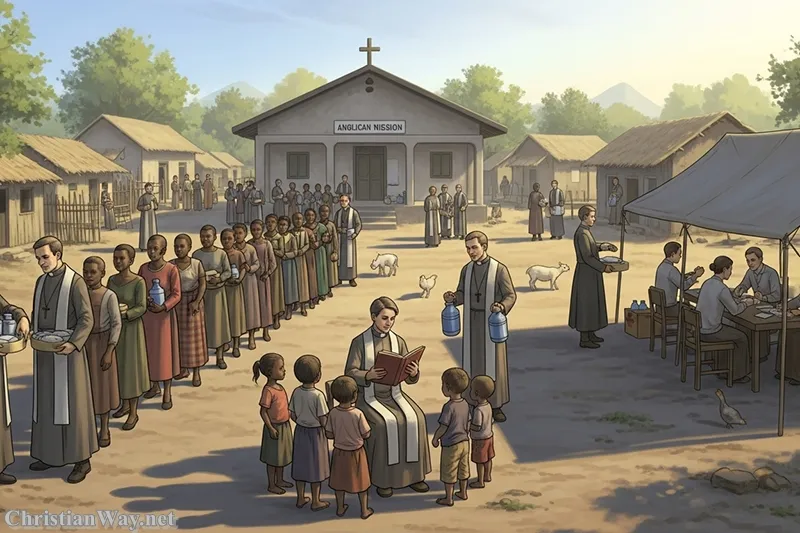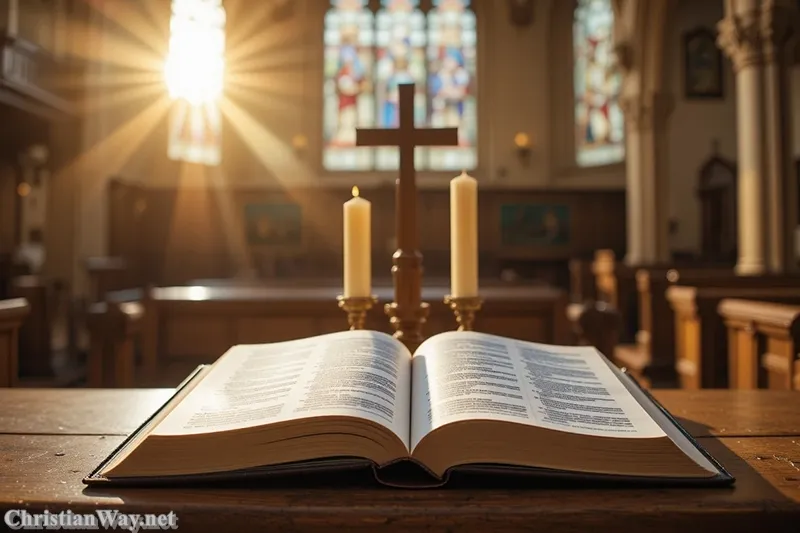Dear friends in Christ,
There are places in the world where time seems to slow, where stone and silence speak of centuries of prayer. Canterbury Cathedral is such a place. Rising from the green heart of Kent, England, it stands as one of the oldest and most revered Christian sites in the Western world — a beacon of Anglican faith, a home of worship, and a witness to the enduring presence of God across ages of human history.
For nearly 1,500 years, its bells have called the faithful to prayer. Within its walls, saints have walked, kings have knelt, and pilgrims have wept. Yet more than a monument of the past, Canterbury remains a living Church — the Mother Church of the Anglican Communion, and the seat of the Archbishop of Canterbury, spiritual leader to millions of Christians across the globe.

In this reflection, we will journey through the history, theology, and living faith of Canterbury Cathedral — not merely as a structure of stone, but as a symbol of unity, witness, and worship in the Body of Christ.
The Birth of a Sacred Place
In the year 597 A.D., St. Augustine of Canterbury, a missionary sent by Pope Gregory the Great, arrived on English shores. His mission was simple yet divine: to bring the light of the Gospel to the Anglo-Saxons. When Augustine established his seat at Canterbury, he planted the roots of what would become the English Church.
The original church built by Augustine became the foundation for what would later rise into the grand Cathedral. It was here that Augustine baptized converts, ordained priests, and laid the groundwork for Christian faith in England. From that moment on, Canterbury would forever be known as the spiritual heart of English Christianity.
The Blood of a Saint
Perhaps the most famous moment in Canterbury’s history is also its most tragic: the martyrdom of St. Thomas Becket in 1170. Becket, the Archbishop of Canterbury, had clashed with King Henry II over the rights and independence of the Church.
When four knights, acting on the king’s rash words — “Will no one rid me of this troublesome priest?” — entered the Cathedral, they struck Becket down at the altar. His blood stained the floor of the sanctuary, and the place of his death became a shrine that drew pilgrims from across Europe.
The story of Thomas Becket reminds us that faithfulness to Christ often demands courage, and that the Church’s witness is sanctified through sacrifice. His martyrdom turned Canterbury into a holy site of pilgrimage, immortalized later in Geoffrey Chaucer’s Canterbury Tales, a work that speaks not only of travel but of the human soul’s journey toward God.
A Center of Worship and Learning
Through the centuries, Canterbury Cathedral has been more than a seat of power; it has been a school of prayer. The rhythm of daily worship — Morning Prayer, Eucharist, and Evensong — continues as it has for hundreds of years, sanctifying time with the praise of God.
The Cathedral’s architecture itself is a sermon: its soaring Gothic arches lift the eye heavenward; its stained-glass windows tell stories of Scripture and saints; its crypt shelters the prayers of generations past. To walk through its nave is to join a procession of believers stretching back to the dawn of English Christianity.
Here theology is not confined to books, but sung in hymns and chanted in psalms. The Cathedral has nurtured scholars, poets, and priests who have shaped Christian thought and Anglican identity. It reminds us that faith and intellect are not enemies, but companions in the search for divine truth.
The Archbishop of Canterbury and the Communion of Faith
At the heart of Canterbury’s continuing mission is its role as the mother church of the Anglican Communion. The Archbishop of Canterbury, whose cathedra (bishop’s seat) stands within this sacred space, serves as the spiritual leader of over 85 million Anglicans across 165 countries.
Though the Anglican Communion is a diverse family — with many languages, cultures, and traditions — Canterbury remains the symbol of their unity in Christ. The Archbishop does not rule as a monarch but serves as “primus inter pares”, the first among equals, among other Anglican bishops.
In this way, Canterbury embodies the vision of the early Church: leadership rooted not in power, but in service; authority expressed not in command, but in communion.
A Living Witness to Christ
To visit Canterbury Cathedral today is to encounter more than history; it is to meet a living community of faith. The Cathedral welcomes pilgrims, tourists, scholars, and the poor alike. Its doors are open to all — for prayer, reflection, or simple silence before God.
In an age of noise and division, the Cathedral stands as a house of reconciliation. Within its chapels, prayers rise daily for peace, justice, and unity among Christians. Its clergy and laity labor together to make the Gospel tangible — through worship, education, and compassionate outreach.
Even the very stones of Canterbury speak: they have endured wars, fires, and reformations, yet the light still burns in its windows, testifying to the resilience of faith and the constancy of God.
The Cathedral in the Modern World
The mission of Canterbury has not diminished with time; it has deepened. In our modern age, when many feel disoriented by materialism or alienated by faith’s decline, the Cathedral continues to proclaim — in word and deed — that God is present, and His mercy endures forever.
Digital worship, global dialogues, interfaith initiatives, and pilgrim programs connect the ancient heart of Canterbury with the living pulse of the world. Its message remains the same: Christ is Lord, and the Church, in all her diversity, remains His body on earth.
As the poet John Donne once wrote — himself a Dean of St. Paul’s, a son of Anglican faith — “No man is an island.” So too, no Christian walks alone. Canterbury reminds us that we belong to one another in the communion of saints and the unity of the Spirit.
A Sign of Unity for All Christians
Beyond its Anglican roots, Canterbury speaks to the wider Christian family. Pilgrims from Catholic, Orthodox, and Protestant traditions come to this holy place not to divide, but to pray together.
It stands as a bridge of hope — a reminder that despite centuries of separation, all who confess Christ share one baptism, one faith, one Lord. In the quiet beauty of its chapel, one can feel that deep yearning of Christ’s own prayer:
“That they may all be one. As you, Father, are in me and I am in you.”
— John 17:21
Canterbury Cathedral, in this sense, is not simply a building or a denomination’s emblem. It is a visible prayer for unity, a call for the Church universal to rediscover the charity and humility that once bound her together.
Reflect and Pray
Beloved in Christ, when we think of Canterbury Cathedral, we are reminded that the Church is not made of stone but of souls — living stones built into a spiritual house (1 Peter 2:5). Each one of us is called to be a small cathedral of grace, where God’s light can dwell and shine into the world.
May we, like the pilgrims who have journeyed to Canterbury for centuries, walk our own pilgrim path with faith and hope. May we find in our hearts that same courage that led Augustine to preach, that same fidelity that led Thomas Becket to die, and that same unity that binds the followers of Christ across the earth.
Let us pray:
Lord Jesus Christ,
You are the cornerstone of our faith and the light of every church.
As you have blessed Canterbury through the ages,
bless your Church today with unity, holiness, and love.
May every heart become a cathedral where your Spirit dwells,
and may all your people, from every land and language,
be one in your peace and truth.
Amen.
— Fr. John Matthew, for Christian Way





